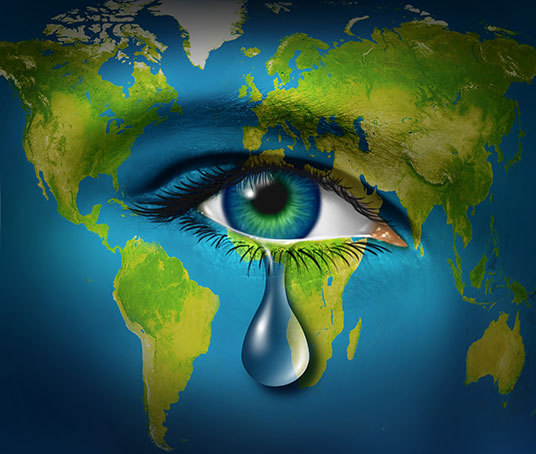"Nope, no. No. Nuh-uh. These aren't good."
I'm sitting next to one of my instructors at the University of Southern California's Annenberg School of Journalism where I'm taking a course in multimedia. We're going through a series of photographs I'd taken for an assignment and he's critiquing them.
"The photos don't make me feel anything," he says.
The day before, I had gone out to shoot photos with an agenda: to find a story about climate change and how it affects people -- the same thing I do every day at work. I intended to find a science person to interview about the California drought and work in a climate change angle. But that was not going to happen. The instructors had given us an insanely tight deadline for a series of assignments -- all due simultaneously -- and restricted the location for our stories. On top of that, I was struggling with unfamiliar equipment.
The instructors also told us not to get blocked into our initial vision. But I was blocked and I was ticked off, too. It was obvious that I was not going to have my way. I felt like I was being pressed into an assignment that was impossible to complete within the allotted time frame. And frankly, I also thought the assignment was beyond my skill set and unrealistic for me.
But the assignment was due and there was no way I was going to quit. I was out in the field, walking around, and I absolutely had to find a stranger, interview him or her and make it work, period, end of story, done. Wandering through my assigned neighborhood, I stopped to admire a well-groomed garden in the front yard of one of the homes. When the homeowner, Migdalia Collazo, walked out onto her porch, I asked if she would allow me to photograph and interview her.
During that first photo shoot, I focused on composition, color, light and context, thinking that was the route to a compelling shot. But my photos were lacking the most important element: a compelling story, something to feel.
After the critique, my teacher's words stayed with me, reverberating in my head:
The photos don't make me feel anything.
The photos don't make me feel anything.
The photos don't make me feel anything.
As a climate and Earth science communicator, I find this is the biggest challenge. We're in a constant fight to capture attention, to move people, to make them care about how their behavior is affecting Earth.
To feel something.
But we get caught up with logical analysis of facts and don't understand why many people don't hear our stories. This is incredibly frustrating because, for us, climate change is so important, so dire, such a big deal. We desperately want to reach out and let our stories be told, to find the right way for the meaning to get through.
So from now on, I'm committed. My goal is to find a way to inspire you to feel something.
I look forward to reading your comments,
Laura
This post originally appeared on NASA's Earth Right Now blog.
This blog post is part of the #WhyICare blog series, curated by the editors of HuffPost Generation Change in recognition of the People's Climate March in New York City on September 21, 2014. To see all the other posts in the series, click here.
Join the conversation on Twitter and tell us why you care about the climate crisis with the hashtags #WhyICare and #PCM. For more information about the People's Climate March, click here.
